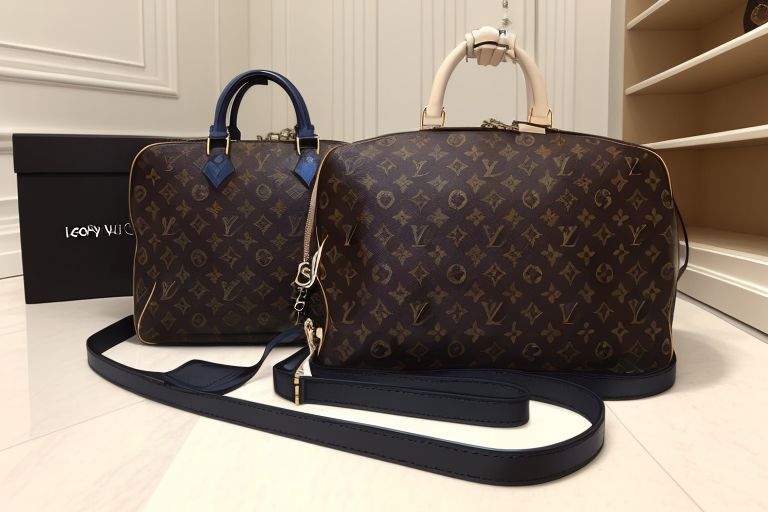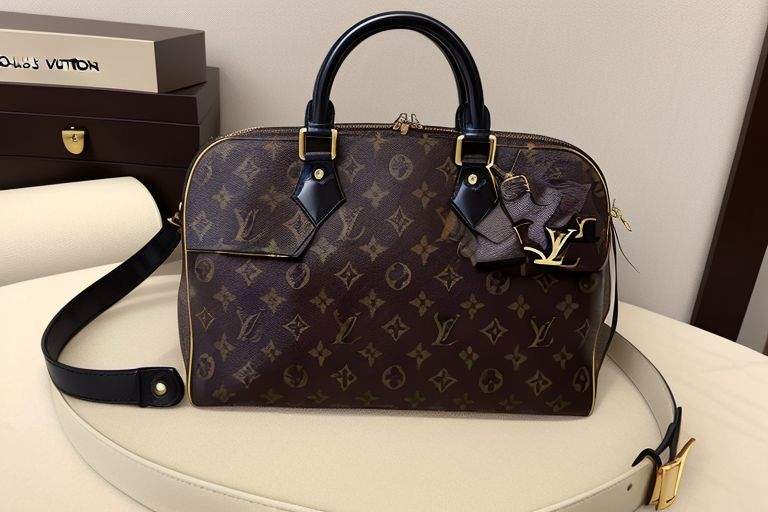
Louis Vuitton, a name synonymous with luxury and opulence, stands as an emblem of craftsmanship, fashion heritage, and innovative marketing strategies in the global luxury market. Founded in 1854 in Paris, this distinguished brand has undergone a remarkable evolution, transcending its origins as a maker of travel trunks to become a world leader in the fashion industry. Its storied history, commitment to quality, and ability to adapt to changing consumer landscapes have solidified its place as an iconic symbol of affluence and sophistication. This essay explores the brand’s origins, its distinctive products, the intricate relationship between luxury and branding, and the challenges and prospects facing Louis Vuitton in the modern marketplace.
Origins and History
Louis Vuitton Malletier was established by Louis Vuitton, who, after honing his craft as a trunk maker, focused on creating lightweight, flat-topped trunks that were both durable and stylish. At a time when travel was predominantly relegated to the upper echelons of society, Vuitton’s innovative designs quickly garnered attention. The flat-top design, which made for efficient stacking, revolutionized the way luggage was perceived, transitioning it from mere utility to an object of desire.
In 1858, Louis Vuitton introduced the signature brown canvas toile monogram, adorned with the iconic LV initials and floral motifs, further solidifying the brand’s unique identity. This monogram has since become a global symbol of luxury. Following Vuitton’s death in 1892, his son, Georges Vuitton, built upon his father’s legacy by expanding the product line and introducing the brand to international markets. The establishment of the Louis Vuitton trademark in 1896 was a significant milestone, offering legal protection against counterfeit products that threatened the brand’s integrity.
Distinctive Products and Craftsmanship
One of the cornerstones of Louis Vuitton’s appeal lies in its unwavering commitment to craftsmanship and quality. Each piece is meticulously created by skilled artisans at various Louis Vuitton ateliers across the world. The brand emphasizes the use of high-quality materials—such as premium leather, canvas, and exotic skins—paired with time-honored techniques that have been perfected over generations. This dedication to craft is evident in their signature products, ranging from the classic speedies and Keepalls to the more contemporary, fashion-forward collections.
Louis Vuitton’s product offerings extend beyond luggage and leather goods to include ready-to-wear apparel, footwear, watches, jewelry, and accessories. This extensive range allows the brand to appeal to a wide demographic while still preserving its luxurious status. Collaborations with renowned artists, designers, and celebrities—such as Takashi Murakami and Virgil Abloh—have further expanded the brand’s artistic boundaries. This blending of traditional craftsmanship with contemporary art has not only attracted a younger audience but also helped Louis Vuitton remain relevant in an ever-evolving marketplace.
Luxury Branding and Marketing Strategies
The relationship between branding and luxury is a fascinating area of exploration that significantly contributes to Louis Vuitton’s success. The brand has adeptly utilized a variety of marketing strategies to convey its values of exclusivity, sophistication, and artistry. The Louis Vuitton logo is more than just a trademark; it is a status symbol, instantly recognizable and imbued with significance. The company has maintained an air of exclusivity through limited product releases, high price points, and selective distribution.
In an age dominated by digital marketing, Louis Vuitton has leveraged social media and influencer partnerships to connect with consumers. The brand’s presence on platforms such as Instagram and TikTok allows them to engage younger demographics while telling its rich brand story through visually compelling content. Furthermore, the strategic placement of Louis Vuitton products in films, music videos, and global events reinforces its image as not merely a fashion house but a cultural phenomenon.
Challenges in the Modern Marketplace
While Louis Vuitton enjoys a prominent position in the luxury market, it faces challenges that require adaptability and strategic foresight. The rise of sustainability and ethical consumerism has prompted luxury brands, including Louis Vuitton, to rethink their production and supply chain strategies. Consumers today are increasingly aware of the environmental and social implications of their purchases, prompting brands to adopt more sustainable practices. Louis Vuitton has made strides in this direction, launching programs aimed at reducing carbon emissions and investing in sustainable materials.
Moreover, the threat of counterfeit goods poses a perennial challenge to luxury brands. Counterfeiting not only undermines brand integrity but also affects revenue. Louis Vuitton has invested heavily in anti-counterfeiting technologies, including blockchain, to protect its intellectual property and ensure product authenticity.

Prospects for the Future
Looking forward, Louis Vuitton is well-positioned to continue its legacy of luxury and innovation. The brand’s strategy of blending tradition with modernity, coupled with its ability to attract a diverse consumer base, augurs well for sustainable growth. As digital transformation reshapes the retail landscape, embracing e-commerce while maintaining an immersive in-store experience will be crucial. Louis Vuitton’s investment in augmented reality and online shopping features, including virtual fashion shows and immersive experiences, reflects a forward-thinking approach aimed at enhancing customer engagement.
Furthermore, expanding its footprint in emerging markets, particularly Asia-Pacific and Africa, presents a significant opportunity for growth. As a new affluent class emerges in these regions, Louis Vuitton is uniquely positioned to cater to their discerning tastes and sensibilities.
In conclusion, Louis Vuitton has transcended its humble beginnings to emerge as a defining player in the luxury sector. Through its relentless commitment to quality, expert craftsmanship, and innovative marketing strategies, the brand has not only maintained its relevance but has also set trends that shape the luxury market. While it faces modern challenges, Louis Vuitton’s ability to adapt and evolve bodes well for its future. As it continues to celebrate its rich heritage while embracing innovation, Louis Vuitton remains a beacon of luxury in a fluid and dynamic global marketplace.






